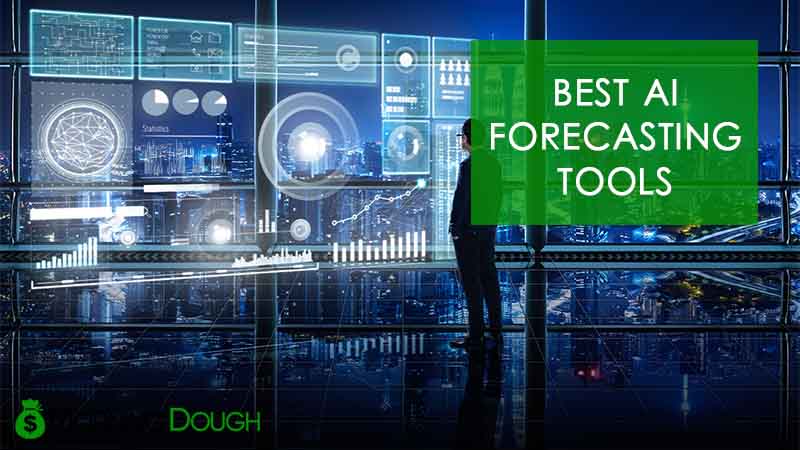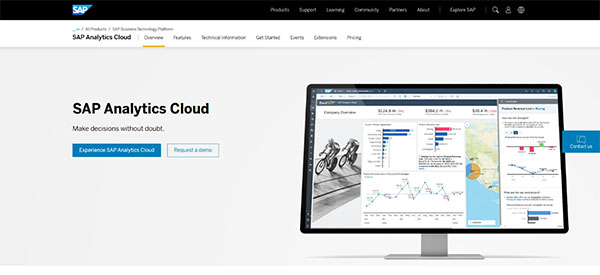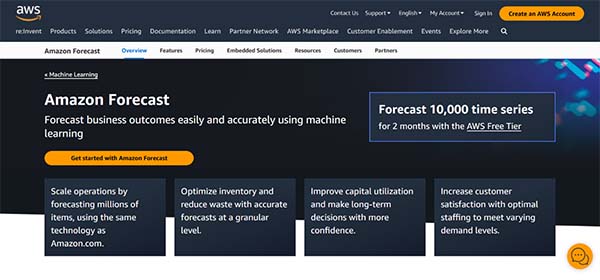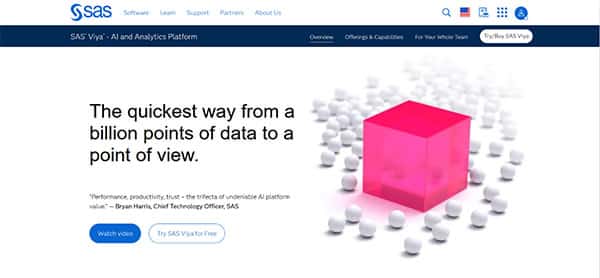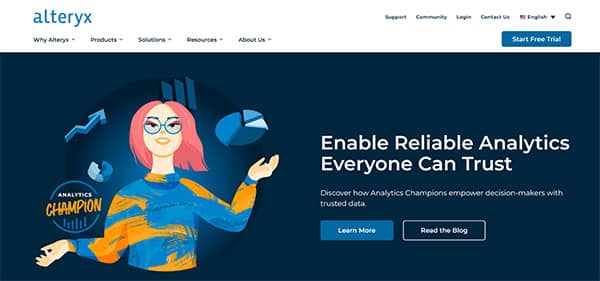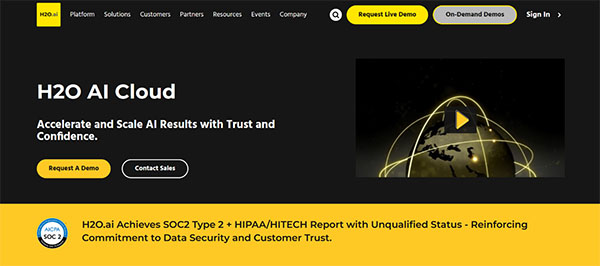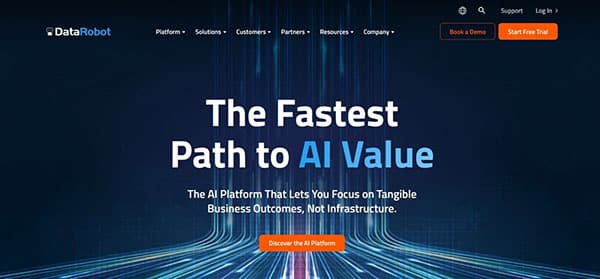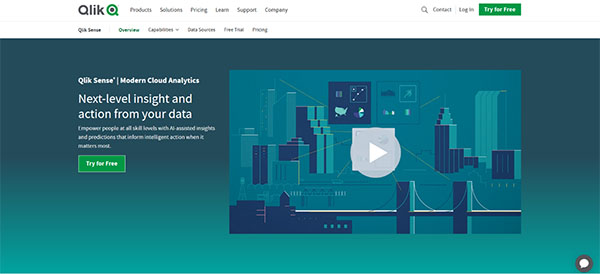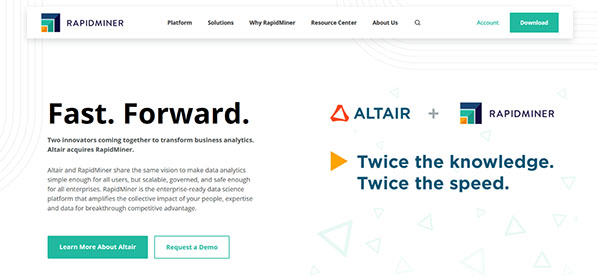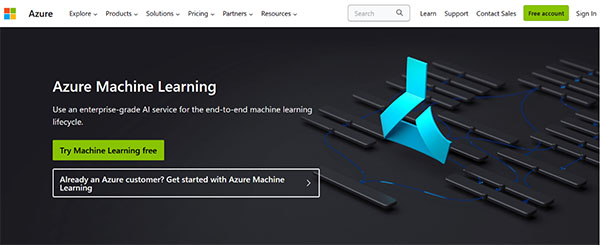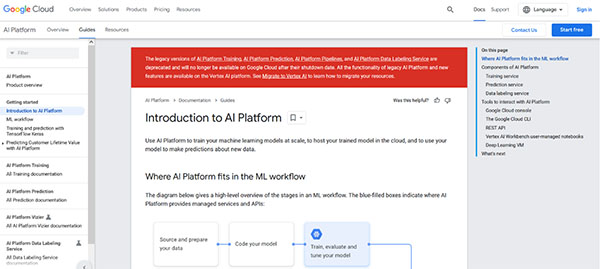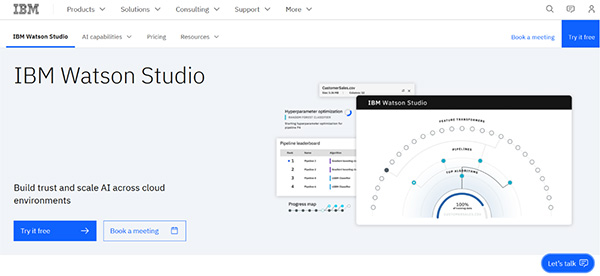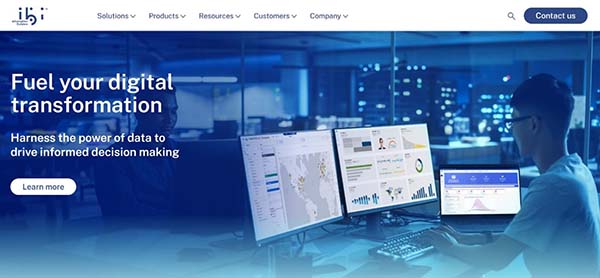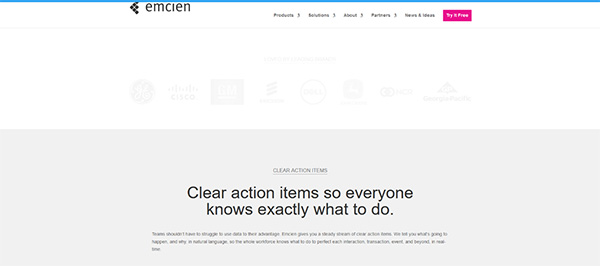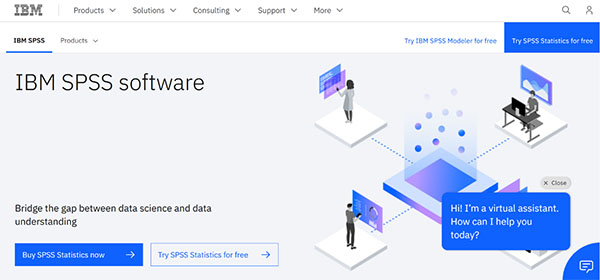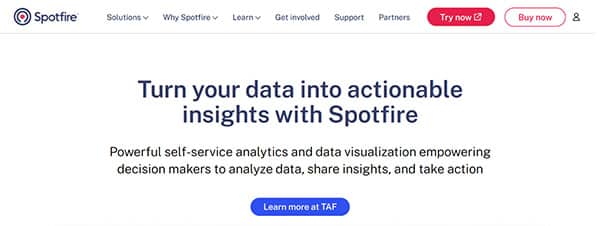16 Best AI Forecasting Tools
Artificial Intelligence (AI) has revolutionized various sectors, and one area where its impact is significantly felt is in forecasting. AI forecasting tools leverage machine learning algorithms and historical data to predict future trends and patterns. These tools are transforming business forecasting and predictive analytics, enhancing the accuracy of predictions, and simplifying the complex process of data analysis. This article will delve into the best AI forecasting tools, their importance, how to choose the best ones, and answer some frequently asked questions about these tools.
The Need for AI Forecasting Tools
In today’s data-driven world, the ability to accurately predict future trends is crucial for businesses. AI forecasting tools are becoming increasingly important as they offer a more efficient and accurate way to analyze and interpret large volumes of data. These tools use advanced machine learning algorithms to analyze historical data, uncover patterns, and predict future trends. This not only enhances the accuracy of predictions but also simplifies the complex process of data analysis.
Moreover, AI forecasting tools are not just for large corporations with vast resources. There are many tools on the market that can help businesses of all sizes become technology-driven and ready for the future of AI. These tools are key to any organization looking to take its data capabilities to the next level.
16 Best AI Forecasting Tools
- SAP Analytics Cloud
- Amazon Forecast
- SAS Viya Advanced Analytics
- Alteryx
- H2O AI Cloud
- DataRobot
- Qlik Sense
- RapidMiner
- Microsoft Azure Machine Learning
- Google Cloud AI Platform
- IBM Watson Studio
- Tableau
- Ibi WebFOCUS
- Emcien
- IBM SPSS
- TIBCO Spotfire
How to choose the Best AI Forecasting Tools?
Choosing the best AI forecasting tools depends on your goals and data characteristics. It’s important to prioritize usability, with a user-friendly interface, clear documentation, and reliable support. Consider scalability, integration, and automation features. Test these tools with your data and scenarios to evaluate their performance in terms of speed, accuracy, and efficiency.
Moreover, the tool should be able to integrate seamlessly with your existing systems and adapt to changing needs. It should also be able to handle the entire pipeline from data preprocessing to deploying the forecasting model in production independently.
AI Forecasting Tools (Free and Paid)
1. SAP Analytics Cloud
SAP Analytics Cloud is a comprehensive, cloud-based AI forecasting tools and analytics tool that combines business intelligence, planning, and predictive analytics. As a software as a service (SaaS) solution, it offers a unified platform for data exploration, visualization, and business decision-making. It leverages augmented and predictive analytics to help users understand their data and make smarter business decisions. The tool is designed to break down silos, bringing teams together to collaborate on plans and drive better business outcomes.
What does SAP Analytics Cloud do?
SAP Analytics Cloud offers built-in self-service Business Intelligence (BI) features to help users explore, analyze, and visualize data. It connects to various data sources, allowing users to perform analytics on data from spreadsheets, large databases, or cloud-based applications. The tool also offers planning capabilities, enabling users to analyze, predict, and plan in one unified environment. Furthermore, SAP Analytics Cloud’s augmented analytics can help users make more confident decisions faster by automatically revealing top influencers, hidden patterns, and outliers in the data.
SAP Analytics Cloud Key Features
Self-Service Data Modeling: SAP Analytics Cloud allows users to create data models, select core algorithms, set parameters and controls, and validate the accuracy of data models.
Real-Time Cloud Insights: The tool provides real-time insights into data, enabling users to make informed decisions quickly.
Augmented Analytics: This feature uses artificial intelligence and machine learning to automatically analyze data, reveal hidden patterns and outliers, and provide actionable insights.
Enterprise Planning: SAP Analytics Cloud enables users to create and link financial and operational plans smoothly in one solution, driving better business outcomes.
Composable Analytics: This feature allows users to easily customize and compose analytics applications, from guided analytics to advanced analytics.
Prebuilt Business Content: SAP Analytics Cloud comes with prebuilt business content, providing users with key resources to stay up-to-date on feature releases.
SAP Analytics Cloud Pros and Cons
SAP Analytics Cloud Pros
- Natural language processing
- Geo-spatial enrichment
- Support to mobile/tabs
- Easy user interface
- Prediction capabilities
- R integration
SAP Analytics Cloud Cons
- Steep learning curve for beginners
- Requires a strong internet connection for optimal performance
- Pricing no available on website
SAP Analytics Cloud Pricing Plans
SAP Analytics Cloud offers several flexible licensing options to meet your organization’s needs. The pricing plans are available on a subscription basis. For detailed information about the specific features and prices of each plan, it is recommended to contact the sales team to request a demo.
2. Amazon Forecast
Amazon Forecast is a fully managed service that uses machine learning to deliver highly accurate forecasts. It is based on the same technology used for time-series forecasting at Amazon.com, providing state-of-the-art algorithms to predict future time-series data based on historical data. This AI forecasting tool is useful in multiple fields, including retail, finance, logistics, and healthcare, and requires no machine learning experience to get started.
What does Amazon Forecast do?
Amazon Forecast uses machine learning to process your time series data (such as price, promotions, and store traffic) and combines that with associated data (such as product features, floor placement, and store locations) to determine the complex relationships between them. By combining time series data with additional variables, Amazon Forecast can be 50% more accurate than non-machine learning forecasting tools. It provides you with controls to optimize your workflows, increase productivity, and reduce cost.
Amazon Forecast Key Features
Accurate Forecasts: Amazon Forecast uses machine learning to create accurate forecasts for your business, improving accuracy by up to 50% compared to traditional methods.
Automated Forecasting Process: Amazon Forecast automates much of the time-series forecasting process, enabling you to focus on preparing your datasets and interpreting your predictions.
Flexible and Scalable: Amazon Forecast can scale operations by forecasting millions of items, using the same technology as Amazon.com.
Cost Optimization: With the ability to focus your forecasts on only a subset of items in your dataset, Amazon Forecast provides you with controls to optimize your workflows, increase productivity, and reduce cost.
Easy Evaluation of Forecast Accuracy: Amazon Forecast provides six different comprehensive accuracy metrics to help you understand the accuracy of your forecasting models.
Integration with AWS Ecosystem: As a part of the AWS ecosystem, Amazon Forecast can easily integrate with other AWS services, providing a seamless experience for users.
Amazon Forecast Pros and Cons
Amazon Forecast Pros
- High accuracy
- Scalability
- Cost optimization
- Easy evaluation of forecast accuracy
- Integration with AWS ecosystem
Amazon Forecast Cons
- Requires machine learning insights
- Can be expensive for small businesses
- Limited free plan
Amazon Forecast Pricing Plans
Amazon Forecast offers a Free Plan and a Pay-as-you-go Plan.
Free Plan: This plan includes up to 10,000 time series forecasts per month, up to 10GB of data storage per month, and up to 10 hours of training per month.
Pay-As-You-Go Plan: This plan charges $0.60 per 1,000 forecasts, $0.088 per GB for data storage, and $0.24 per hour for training.
Amazon Forecast accepts debit and credit cards, Amazon Pay, and bank wire transfer for payments.
3. SAS Viya Advanced Analytics
SAS Viya Advanced Analytics is a comprehensive AI forecasting tool and analytics platform that offers a wide range of capabilities for data management, advanced analytics, and machine learning. It is designed to streamline the entire data-to-decision lifecycle, providing beautifully designed interfaces that make it easy for users to access, manipulate, analyze, and present information. This platform is recognized as a leader in the Gartner Magic Quadrant for Data Science and Machine Learning Platforms, demonstrating its robustness and reliability in delivering high-quality analytics solutions.
What does SAS Viya Advanced Analytics do?
SAS Viya Advanced Analytics provides a platform for accessing, forecasting, manipulating, analyzing, and presenting data. It uses machine learning, text analytics, and econometrics capabilities to enhance forecasting and optimization. The platform also manages and registers both SAS and open-source models within projects or as standalone models. It offers a self-service interface that allows users to create and share smart visualizations and interactive reports, making it easier to discover new trends and patterns in data.
SAS Viya Advanced Analytics Key Features
Data Management: SAS Viya Advanced Analytics allows users to import data from a variety of sources, including databases, Hadoop, Excel spreadsheets, and social media. It provides standard data quality functions and data preparation tools, making it easier to build reports or dashboards.
Advanced Analytics: The platform supports end-to-end data mining and machine learning processes. It offers both visual and programming interfaces, allowing users to tune models for peak performance and identify the most effective model through model tournaments.
Interactive Reporting: SAS Viya Advanced Analytics enables users to create interactive, self-service BI and reporting capabilities. It allows users to identify patterns and relationships in data that weren’t initially evident, enhancing their ability to make data-driven decisions.
Collaboration Tools: The platform provides sharing and collaboration tools that allow users to annotate, comment, share, and email reports to others for increased collaboration. It also sends notifications to alert users when a report is updated, data is changed, or the application is updated.
Model Deployment & Management: SAS Viya Advanced Analytics simplifies the creation and management of your model collection. It allows users to easily embed models into operational systems to monitor performance.
Forecasting and Optimization: The platform uses machine learning, text analytics, and econometrics capabilities for better forecasting and optimization, providing users with accurate and reliable predictions and insights.
SAS Viya Advanced Analytics Pros and Cons
SAS Viya Advanced Analytics Pros
- Comprehensive analytics platform
- Wide range of data management tools
- Advanced analytics capabilities
- Interactive reporting features
- Effective collaboration tools
- Efficient model deployment and management
SAS Viya Advanced Analytics Cons
- Lack of tutorials for beginners
- Licensing can be expensive
- Some features may be too complex for small businesses
SAS Viya Advanced Analytics Pricing Plans
SAS Viya Advanced Analytics offers several pricing plans to cater to different user needs. Users need to contact SAS Viya sales team for pricing information.
4. Alteryx
Alteryx is a robust data science and analytics automation platform that empowers decision-makers with trusted data. This AI forecasting tool is designed to supercharge your agency’s mission by maximizing government data to make smarter decisions and accelerate outcomes. Alteryx is a tool that enables fast, confident decisions across the enterprise, helping to build impactful teams, collaborate, and provide answers that increase the top and bottom line. It is particularly useful for spotting patterns in target populations and gaining a better understanding of data.
What does Alteryx do?
Alteryx is a comprehensive data analytics platform that allows users to create simple interfaces for entering and modifying data on the fly. It enables users to combine, prepare, and blend multiple data sources, and then apply a series of analytical tools to gain a better understanding of this data. Alteryx comes packaged with a series of predictive analytics modeling tools, promoting full sharing of information between users. It has the ability to be deployed directly into production, using existing R and Python models without needing to be modified, which enables business teams to run streaming analytics without making major changes.
Alteryx Key Features
Code-Free or Code-Friendly Interface: Alteryx offers a code-free or code-based interface, allowing users of any level of coding expertise to use C++, Python, or R languages to write code.
Efficiency: Alteryx Designer rapidly extracts and integrates data from many sources, producing faster insights.
Automated Workflows: Alteryx allows for the automation of repetitive workflows or updates them as needed to save time.
Easy Integration: Alteryx Designer provides a wide range of software for companies to select according to their needs. It directly integrates with Alteryx Analytics Gallery, Alteryx Analytics Server, Alteryx Connect, and Alteryx Promote.
Spatial Analytics: Data analysis based on demographic, firmographic, and geospatial intelligence helps to produce insightful business decisions.
Predictive Analytics: Alteryx comes with predictive analytics modeling tools, enabling users to anticipate future trends and behaviors.
Alteryx Pros and Cons
Alteryx Pros
- Easy to learn
- Efficient for data wrangling
- Can build app and help with data automation
- Provides flexibility to prepare and analyze data
- Enables greater understanding of various analytics processes
Alteryx Cons
- Pricing no available on website
- Integration with other tools can be challenging
Alteryx Pricing Plans
Alteryx offers flexible pricing plans to meet the needs of different users. Users need to contact the sales team for pricing information.
5. H2O AI Cloud
H2O AI Cloud is an advanced end-to-end AI forecasting tool designed to facilitate the creation, deployment, monitoring, and sharing of data models or AI applications for a wide range of use cases. This platform is trusted by over 20,000 organizations worldwide, and it is designed to simplify the process of implementing machine learning, enabling users at all levels to generate innovative solutions to complex business problems.
What does H2O AI Cloud do?
H2O AI Cloud is a comprehensive platform that enables users to create new AI models and run experiments on their data using automated validation, selection, and tuning for their models. The platform’s automated machine learning capabilities, powered by H2O-3, H2O Hydrogen Torch, and Driverless AI, help data scientists work more efficiently on their projects. The platform is deployed on Kubernetes and can be run on most cloud or on-premise infrastructure, providing flexibility and control over deployment options.
H2O AI Cloud Key Features
Feature Transformation: H2O AI Cloud offers feature transformation capabilities, including data visualization, automatic data insights, pre-processing transformers, dataset splitting, missing value handling, and outlier detection.
Automated Machine Learning: The platform provides comprehensive automated machine learning capabilities, transforming how AI is created and used. It makes AI easier and faster to use while maintaining expert levels of accuracy, speed, and transparency.
AI AppStore: The H2O AI Cloud includes an AI AppStore designed to simplify the delivery and consumption of AI, enabling more people to access and participate in innovation efforts.
Machine Learning Integration: The platform supports API access to best-in-class data science capabilities, making it easy to integrate machine learning into various applications.
Model Management and Monitoring: H2O AI Cloud provides a comprehensive suite of capabilities surrounding machine learning operations, enabling users to effectively manage and monitor their models in production.
Flexible Architecture: The platform offers a flexible architecture with distributed processing, optimized compute efficiency, and the ability to scale according to the needs of the user.
H2O AI Cloud Pros and Cons
H2O AI Cloud Pros
- Comprehensive automated machine learning capabilities
- Flexible deployment options
- Robust data visualization and feature transformation tools
- Integrated machine learning operations
- Scalable and efficient architecture
H2O AI Cloud Cons
- Pricing no available on website
- Complexity may be overwhelming for beginners
H2O AI Cloud Pricing Plans
H2O AI Cloud offers custom pricing according to the customer’s needs. Users need to contact the sales team for a live demo and pricing information.
6. DataRobot
DataRobot is a leading AI forecasting platform that empowers organizations to accelerate their AI journey from idea to impact. With over a decade at the forefront of AI innovation, DataRobot has been instrumental in making AI accessible and valuable across various sectors. The platform is designed to democratize data science, providing a centrally governed platform that streamlines multiple algorithms, allowing them to be tested and used to validate results. It offers a simple interface that enables modeling, simulation, and sensitivity analysis, both from an operational and strategic perspective.
What does DataRobot do?
DataRobot is a full AI lifecycle platform that provides generative and predictive AI solutions. It offers a unified AI experience, allowing users to monitor and visualize model performance at any scale, and achieve continuous optimization with real-time alerts and rich insights. The platform is designed to alleviate the cumbersome and lengthy process associated with model design and validation. It integrates predictive and generative AI into the applications your business users rely on every day, delivering generative AI using existing enterprise messaging applications.
DataRobot Key Features
Automated Machine Learning: DataRobot’s platform offers automated machine learning, optimizing, and identifying data patterns, reducing time and effort for predictive modeling.
Feature Selection: The platform combines multiple approaches for feature selection in its modeling workflow, including model-agnostic feature importance, model-specific feature impact analysis, and automated feature selection.
Model Deployment: Deployments in DataRobot are well organized, allowing for efficient feedback loops between data preparation and model building.
No Code Application Builder: DataRobot offers a drag-and-drop interface that allows users to build custom applications without requiring any coding skills.
Automated Time Series: This feature allows users to build accurate time series models quickly and easily.
DataRobot University: A training program that offers courses and certifications in AI and machine learning.
DataRobot Pros and Cons
DataRobot Pros
- Robust Tools & Functionality
- Efficient feedback loop
- Unique refinement techniques
- No Code Application Builder
- Automated Time Series
- DataRobot University
DataRobot Cons
- Complexity for initial users
- Pricing no available on website
- May consume longer time and resources required for deployment
DataRobot Pricing Plans
DataRobot offers a variety of pricing plans to meet the needs of different organizations. The specific features and prices of these plans can be obtained by contacting the sales team for a demo.
7. Qlik Sense
Qlik Sense is a modern cloud analytics and AI forecasting tool that is designed to support a wide range of analytics use cases. It is a self-service BI platform for data discovery and visualization, offering a unique associative model that allows users to explore information and gain insights quickly. Qlik Sense is known for its intelligent alerting, powerful collaboration, mobile and embedded analytics, and automated triggering of immediate actions. It is trusted by more than 40,000 customers worldwide, offering unmatched performance and flexibility.
What does Qlik Sense do?
Qlik Sense is a data visualization and discovery product that allows users to create flexible, interactive visualizations leading to meaningful decisions. It supports a full range of analytics use cases, including data governance, pixel-perfect reporting, and collaboration. Its Associative Engine indexes and connects relationships between data points, enabling users to access, interpret, and analyze data insights effectively to support strategic decision-making. Qlik Sense is also mobile-friendly, allowing users to access applications anywhere, anytime, and even on mobile devices.
Qlik Sense Key Features
Associative Model: Qlik Sense’s associative model is a key feature that allows users to explore all possible associations in their data, not just pre-defined hierarchies or query-based connections.
Smart Visualizations and Analytics: Qlik Sense offers smart visualizations and analytics that enable users to create flexible, interactive visualizations and make data-driven decisions.
Self-Service Creation: This feature allows users to create and publish their own reports and dashboards, promoting a culture of self-service BI.
Centralized Sharing and Collaboration: Qlik Sense provides a centralized hub for sharing and collaboration, making it easy for users to share insights and work together on data analysis.
Customizable Dashboards: Users can customize dashboards to meet their specific needs, providing a personalized view of their data.
Predictive Analytics: Qlik Sense supports predictive analytics, allowing users to forecast future trends and make proactive decisions.
Qlik Sense Pros and Cons
Qlik Sense Pros
- User-friendly interface
- Robust data visualization capabilities
- Powerful associative model
- Mobile accessibility
- Customizable dashboards
- Predictive analytics
Qlik Sense Cons
- Requires technical knowledge to fully utilize
- No free plan is available
- Additional cost for plugins and add-ons
Qlik Sense Pricing Plans
Qlik Sense offers three main pricing plans: Standard, Premium, and Enterprise.
Standard Plan: The Standard Plan, priced at $20 per user per month, includes predictive analytics and machine learning with Qlik AutoML, offering unlimited experiments and two deployed models included. It also features a no-code automation builder that triggers dynamic actions across systems, with 5,000 automation runs per month included.
Premium Plan: The Premium Plan, priced at $2,700 per month, includes all the features of the Standard Plan, with additional capabilities for data integration with SAP, mainframe, and legacy systems. It also offers automated report compilation and distribution.
Enterprise Plan: The Enterprise Plan includes all the features of the Premium Plan, with additional capabilities for enterprise-scale deployments. Users need to contact the sales team for a quote.
Qlik Sense accepts debit and credit cards, and bank wire transfer for payments.
8. RapidMiner
RapidMiner stands out as an AI forecasting tool and comprehensive data science platform that serves as a pivotal tool for organizations aiming to harness the power of their data. With its roots in the open-source community and a recent acquisition by Altair, RapidMiner has evolved into an enterprise-ready solution that promises to simplify data analytics while ensuring scalability, governance, and security. It is designed to amplify the collective impact of a company’s people, expertise, and data, thereby providing a competitive edge through breakthrough analytics.
What does RapidMiner do?
RapidMiner operates as a multifaceted platform that delivers end-to-end data science capabilities. It provides a suite of tools that support the entire data science lifecycle, from data preparation to advanced analytics and model deployment. The platform is known for its visual workflow designer, which allows users to create and execute analytical processes with ease. Additionally, RapidMiner supports automated data science, enabling users to quickly build predictive models, as well as offering a code-based environment for more seasoned data scientists. With its ability to integrate with R and Python and its extensive library of machine learning algorithms, RapidMiner caters to a wide range of analytics needs.
RapidMiner Key Features
Visual Workflow Designer: RapidMiner’s intuitive visual interface allows users to drag and drop to create data analysis processes without the need for extensive coding, making it accessible to users of varying skill levels.
Automated Data Science: The platform’s automated machine learning capabilities enable users to build predictive models in just a few clicks, streamlining the model creation process.
Code-Based Data Science: For those who prefer coding, RapidMiner provides an integrated JupyterLab environment, allowing data scientists to write and execute Python and R scripts within the platform.
Extensive Algorithm Library: RapidMiner boasts a large collection of machine learning algorithms, which can be further expanded through plugins from the RapidMiner Marketplace.
Big Data Integration: The platform is equipped to handle large datasets, providing users with the tools to perform analytics at scale.
Real-Time Scoring: RapidMiner enables the deployment of predictive models for real-time scoring, allowing businesses to make data-driven decisions promptly.
RapidMiner Pros and Cons
RapidMiner Pros
- Large ML algorithms library
- Automated algorithm optimization
- Visual workflow design
- Code-based customization
- Big data capabilities
- Real-time analytics
RapidMiner Cons
- Steep learning curve for beginners
- Can be resource-intensive
- Pricing no available on website
RapidMiner Pricing Plans
RapidMiner offers tailored pricing plans to meet the specific needs of different organizations. To understand the full range of features and pricing options available, users need to contact the sales team to request a demo and discuss their unique requirements.
9. Microsoft Azure Machine Learning
Microsoft Azure Machine Learning is a robust cloud-based platform designed to empower developers, data scientists, and AI professionals to build, train, and deploy machine learning models efficiently. Leveraging the power of the Azure cloud infrastructure, it offers a wide range of tools and services that streamline the machine learning lifecycle from data preparation to model deployment and management. With its scalable environment, users can work on projects of any size, from small datasets to large-scale machine learning operations, ensuring that the platform is versatile enough to handle diverse business needs and technical requirements.
What does Microsoft Azure Machine Learning do?
Microsoft Azure Machine Learning provides an integrated, end-to-end data science and advanced analytics solution. It enables users to prepare data, develop experiments, and deploy models at scale. The service simplifies the process of building machine learning models by providing a collaborative workspace, pre-built algorithms, and data transformation capabilities. It also supports open-source frameworks and tools, allowing for flexibility and customization. With Azure Machine Learning, users can automate model training and tuning, manage resources efficiently, and operationalize models quickly, turning data into actionable insights and intelligent applications.
Microsoft Azure Machine Learning Key Features
Automated Machine Learning: This feature accelerates the model development process by automating the selection of algorithms and hyperparameters, making it easier for both novice and experienced data scientists to build high-quality models.
Scalable Compute: Azure Machine Learning offers scalable compute resources that can be adjusted based on the workload, allowing for efficient resource management and cost savings.
Integrated Development Environment: The platform provides an integrated development environment with support for popular tools and frameworks, enabling a seamless transition from development to deployment.
MLOps Capabilities: It includes robust MLOps (Machine Learning Operations) capabilities to streamline the entire machine learning lifecycle, including model management, monitoring, and deployment.
Responsible AI: Azure Machine Learning is equipped with tools and features to build responsible AI systems, ensuring fairness, transparency, and accountability in machine learning models.
Hybrid and Multi-Cloud Support: The service offers hybrid and multi-cloud capabilities, allowing users to build and deploy models across various environments, including on-premises and other cloud platforms.
Microsoft Azure Machine Learning Pros and Cons
Microsoft Azure Machine Learning Pros
- Scalable infrastructure
- Automated ML
- MLOps integration
- Hybrid cloud support
- Responsible AI tools
- Extensive framework support
Microsoft Azure Machine Learning Cons
- Learning curve for new users
- Pricing no available on website
- Requires Azure subscription
Microsoft Azure Machine Learning Pricing Plans
Microsoft Azure Machine Learning offers a variety of pricing plans to accommodate different user needs and budgets. Users need to contact the sales team for custom pricing.
10. Google Cloud AI Platform
Google Cloud AI Platform is a comprehensive suite of services designed to facilitate the development, deployment, and management of AI applications. It provides a robust environment for machine learning developers, data scientists, and data engineers to take their projects from ideation to production and deployment in a cost-effective manner. The platform is designed to be scalable, flexible, and user-friendly, making it a go-to choice for businesses and individuals looking to leverage the power of AI and machine learning.
What does Google Cloud AI Platform do?
Google Cloud AI Platform offers a range of services that allow users to build, deploy, and manage machine learning models. It provides tools for data engineering, machine learning, and AI, enabling users to create and run their own machine learning applications. The platform supports a variety of machine learning tasks, including data labeling, model training, and prediction. It also offers tools for interacting with the platform, such as the Google Cloud console, making it easier for users to manage their AI and machine learning projects.
Google Cloud AI Platform Key Features
Scalability: Google Cloud AI Platform is designed to scale as your needs grow. It can handle everything from small projects to large-scale machine learning tasks, making it a versatile choice for businesses of all sizes.
Flexibility: The platform supports a wide range of machine learning frameworks, languages, and tools, giving users the flexibility to use the tools they are most comfortable with.
Integrated Tool Chain: Google Cloud AI Platform offers an integrated tool chain that helps users build and run their own machine learning applications. This includes tools for data engineering, machine learning, and AI.
Data Labeling Service: The platform provides a data labeling service that allows users to create high-quality training datasets for their machine learning models.
Model Training and Prediction: Google Cloud AI Platform supports model training and prediction, enabling users to train their models with their own data and make predictions using the trained models.
Google Cloud Console: The platform includes the Google Cloud console, a tool that allows users to interact with the platform and manage their AI and machine learning projects.
Google Cloud AI Platform Pros and Cons
Google Cloud AI Platform Pros
- Scalable
- Flexible
- Integrated tool chain
- Data labeling service
- Supports model training and prediction
Google Cloud AI Platform Cons
- May be complex for beginners
- Limited free trial
Google Cloud AI Platform Pricing Plans
Google Cloud AI Platform offers a pay-as-you-go pricing model, meaning you only pay for the services you use. There are no upfront fees or termination charges, and the prices vary depending on the product and usage.
Free Trial: New customers receive $300 in credits to run, test, and deploy workloads. All customers can use more than 25 products for free until they reach the monthly usage limits.
Pay-as-you-go: With Google Cloud’s pay-as-you-go pricing, you only pay for the services you use. The prices vary depending on the product and usage.
Google Cloud AI Platform accepts debit and credit cards, GPay, and bank wire transfer for payments.
11. IBM Watson Studio
IBM Watson Studio is a powerful AI forecasting tool that empowers data scientists, developers, and analysts to build, run, and manage AI models. It optimizes decisions anywhere on IBM Cloud Pak for Data, uniting teams, automating AI lifecycles, and speeding up time to value on an open multicloud architecture. It brings together open source frameworks like PyTorch, TensorFlow, and scikit-learn with IBM and its ecosystem tools for code-based and visual data science.
What does IBM Watson Studio do?
IBM Watson Studio provides an environment and tools to solve business problems by collaboratively working with data. It enables users to operationalize AI anywhere as part of IBM Cloud Pak for Data. The solution simplifies AI lifecycle management and accelerates time to value with an open, flexible multicloud architecture. It supports work with Jupyter notebooks, JupyterLab, and CLIs, or in languages such as Python, R, and Scala.
IBM Watson Studio Key Features
Statistical Tool: IBM Watson Studio includes a statistical tool that allows for comprehensive data analysis and interpretation.
Data Analysis: It provides robust data analysis capabilities, enabling users to extract meaningful insights from their data.
Decision Making: Watson Studio aids in decision making by providing predictive analytics and data-driven insights.
Model Development: It offers a platform for developing, training, and deploying machine learning and AI models.
Machine/Deep Learning Services: Watson Studio supports machine and deep learning services, allowing for the creation of sophisticated AI models.
Deployment: It allows for the deployment of models at scale across any cloud, enhancing operational efficiency and flexibility.
IBM Watson Studio Pros and Cons
IBM Watson Studio Pros
- User-friendly interface
- High-resolution visual graphics
- Advanced modeling techniques
- Secure and can have federation security
- Quick processing
IBM Watson Studio Cons
- Pricing no available on website
- Takes time to integrate
- Targeting towards bigger organizations that can afford Watson
IBM Watson Studio Pricing Plans
IBM Watson Studio offers multiple licensing options including a committed-term license and an as-a-service subscription. Users need to contact the sales team for custom pricing.
12. Tableau
Tableau is a leading AI forecasting tool that has transformed the way businesses interact with data. It provides a robust platform for data visualization, analytics, and business intelligence, enabling users to explore data, deliver insights, and take action. Tableau’s capabilities extend beyond simple data representation, offering advanced features like predictive modeling and exponential smoothing for forecasting. It’s designed to handle complex data sets and deliver intelligent analytics at scale, making it a preferred choice for many businesses.
What does Tableau do?
Tableau is designed to simplify the process of data visualization and business intelligence. It allows users to create interactive, shareable dashboards, which highlight the trends, variations, and density of the data in easy-to-understand charts and graphs. Tableau supports data exploration with intuitive tools that let users drill down into complex data and extract meaningful insights. It also offers predictive modeling capabilities, using techniques like exponential smoothing to forecast future trends based on historical data.
Tableau Key Features
Informative Dashboards: Tableau provides highly informative and interactive dashboards that allow users to visualize and understand their data in a more intuitive way.
Supports Numerous Data Sources: Tableau can connect to various data sources, including spreadsheets, cloud databases, and even big data processes, providing a versatile platform for data analysis.
Live and In-Memory Data Connectivity: Tableau offers the flexibility to connect to live data for real-time analytics or in-memory data for quick, responsive data exploration.
Advanced Visualizations: Tableau supports a wide range of advanced visualization options, enabling users to present their data in the most meaningful and impactful way.
AI-Powered Analytics: Tableau leverages AI technologies to enhance its analytics capabilities, offering features like predictive modeling and automated data exploration.
Collaboration and Sharing: Tableau provides robust collaboration tools, allowing users to share their findings and collaborate on data analysis in a secure environment.
Tableau Pros and Cons
Tableau Pros
- High performance
- Supports numerous data sources
- Advanced visualization capabilities
- AI-powered analytics
- Robust collaboration tools
Tableau Cons
- Requires technical expertise
- Time-consuming setup process
Tableau Pricing Plans
Tableau offers three main pricing plans: Tableau Creator, Tableau Explorer, and Tableau Viewer.
Tableau Creator: This plan, priced at $75 per user per month, is designed for analysts and power users who need to create and publish dashboards and reports. It includes Tableau Desktop, Tableau Prep, and a Creator license of either Tableau Server or Tableau Online.
Tableau Explorer: This plan, priced at $42 per user per month, is for users who need to explore the data and interact with the dashboards created by others. It includes a license for either Tableau Server or Tableau Online.
Tableau Viewer: This plan, priced at $15 per user per month, is for users who need to view and interact with the dashboards and reports created by others. It includes a Viewer license for either Tableau Server or Tableau Online.
Tableau accepts debit and credit cards, PayPal, and bank wire transfer for payments.
13. Ibi WebFOCUS
Ibi WebFOCUS is a comprehensive business intelligence (BI) platform designed to help organizations deliver information and analytics to a wide range of users. It integrates four critical elements for smarter business intelligence: performance management, advanced analytics, data integrity, and a user-friendly interface. This platform is known for its ability to reveal operational metrics on demand, serving users in various fields and supporting initiatives and projects throughout organizations, potentially saving millions of dollars and improving the overall quality of care.
What does Ibi WebFOCUS do?
Ibi WebFOCUS is an enterprise business intelligence and analytics solution equipped with data management, visual discovery, and predictive analytics capabilities. It combines these features and data science in one unified containerized platform. The platform is used across various industries and departments, from stores where managers can see daily reports to strategic service centers where complex data analysis is performed. It’s designed to improve outcomes, reduce costs, and support initiatives and projects throughout an organization.
Ibi WebFOCUS Key Features
Streamlined Access and Navigation: Ibi WebFOCUS provides a unified tool that offers consolidated authoring capabilities and a seamless navigation to all areas of the platform. It allows users to see their recent and favorite items from both the WebFOCUS Client and the Reporting Server.
Visualizing Data: The platform offers enhanced designer workflows and user interface for data visualization. It allows users to create and incorporate content into pages in innovative ways.
Data Management: Ibi WebFOCUS introduces new data access workflows. It allows users to upload or connect to their data and quickly enable data analysis.
Data Preparation Enhancements: The platform represents sources and targets with database-specific icons, indicating when required components are missing. This feature simplifies the data preparation process.
Customizable Dashboards: WebFOCUS offers customizable dashboards that allow users to create a personalized and interactive data visualization environment.
Drill-down Analysis: The platform provides drill-down analysis capabilities, enabling users to delve deeper into their data for more detailed insights.
Ibi WebFOCUS Pros and Cons
Ibi WebFOCUS Pros
- Easy to use GUI
- Powerful data analysis capabilities
- Capable of complex calculations
- Comprehensive data management
- Customizable dashboards
Ibi WebFOCUS Cons
- Initial setup can be complex
- Requires specialized knowledge for full utilization
- Pricing no available on website
Ibi WebFOCUS Pricing Plans
Ibi WebFOCUS offers flexible plans to its customers. The pricing of these plans is custom and based on the specific needs of the organization. Users need to contact the sales team for pricing information.
14. Emcien
Emcien is a sophisticated AI forecasting tool and analytics platform that specializes in prescriptive and predictive analytics, designed to streamline complex data analysis and enhance decision-making processes for businesses. This tool stands out for its ability to convert vast amounts of data into actionable insights, which can be seamlessly integrated into existing applications and systems. Emcien’s approach to data analytics is centered around providing clear action items and predictions in natural language, making it accessible to a broad range of users within an organization, from technical experts to business professionals.
What does Emcien do?
Emcien’s core functionality revolves around transforming raw data into forecasts and prescriptive actions, enabling organizations to anticipate future trends and optimize their operations accordingly. The platform employs advanced machine learning algorithms to identify patterns and connections within data, facilitating the creation of predictive models that are both accurate and easy to interpret. Emcien operates continuously, offering real-time insights that empower businesses to stay ahead of potential issues such as equipment downtime or supply chain delays. Its user-friendly interface and self-learning capabilities make it a valuable asset for companies looking to leverage predictive analytics without the need for extensive data science expertise.
Emcien Key Features
Clear Action Items: Emcien provides a steady flow of clear action items based on predictive analytics, ensuring that teams across the organization understand what steps to take to optimize outcomes.
Integration with Apps & Systems: The platform is designed to work within the apps and systems that businesses already use, injecting actionable insights directly where they are needed most.
Continuous Improvement: Emcien’s software is built to continuously improve its predictive models, ensuring that the insights it provides remain relevant and accurate over time.
No Data Skills Required: The platform is accessible to users without a background in data science, thanks to its intuitive design and self-learning algorithms.
Scalability and Speed: Emcien is capable of handling large volumes of data with unprecedented scalability and speed, making it suitable for businesses of all sizes.
Predictive Analytics: The tool’s predictive analytics capabilities allow for accurate forecasting of events such as equipment failure or supply chain issues, complete with visualizations and the probability of occurrence.
Emcien Pros and Cons
Emcien Pros
- Clear action items
- Seamless integration
- Continuous improvement
- User-friendly interface
- Scalable and fast
- Advanced predictive analytics
Emcien Cons
- Pricing no available on website
- May require initial setup assistance
- Integration complexity with legacy systems
- Potential learning curve for advanced features
Emcien Pricing Plans
Emcien offers custom pricing plans tailored to the specific needs of businesses. Interested parties are encouraged to contact the sales team to request a demo and discuss pricing options.
15. IBM SPSS
IBM SPSS is a powerful statistical software platform that offers a comprehensive suite of advanced statistical analysis tools. It provides a vast library of machine learning algorithms, text analysis, open-source extensibility, and seamless integration with big data. Its user-friendly interface, flexibility, and scalability make it accessible to users of all skill levels. It’s suitable for projects of all sizes and levels of complexity, helping users find new opportunities, improve efficiency, and minimize risk.
What does IBM SPSS do?
IBM SPSS is designed to provide advanced statistical analysis and predictive modeling. It supports a top-down, hypothesis testing approach to data, while also exposing patterns and models hidden in data through a bottom-up, hypothesis generation approach. It’s capable of handling large amounts of data and can perform all of the analyses covered in the text. It’s commonly used in the Social Sciences and in the business world, making it a valuable tool for a wide range of professionals.
IBM SPSS Key Features
Advanced Statistical Analysis: IBM SPSS offers advanced statistical procedures that help ensure high accuracy and quality decision making. It allows users to run descriptive statistics and regression analyses, view patterns of missing data, and summarize variable distributions.
Machine Learning Algorithms: The platform provides a vast library of machine learning algorithms that can be used to create predictive models and uncover hidden insights in data.
Text Analysis: IBM SPSS includes text analysis capabilities, allowing users to extract meaningful information from unstructured text data.
Open-Source Extensibility: Users can enhance SPSS syntax with R and Python using a library of extensions or by building their own, providing additional flexibility and customization options.
Integration with Big Data: IBM SPSS can integrate with big data platforms, enabling users to analyze large datasets and derive valuable insights.
Ease of Use: Despite its advanced capabilities, IBM SPSS is known for its user-friendly interface and ease of use, making it accessible to users of all skill levels.
IBM SPSS Pros and Cons
IBM SPSS Pros
- User-friendly interface
- Advanced statistical analysis capabilities
- Extensive machine learning algorithms
- Open-source extensibility
- Integration with big data
- Suitable for all skill levels
IBM SPSS Cons
- Can be expensive for some users
- Requires training for optimal use
- May be overwhelming for beginners
IBM SPSS Pricing Plans
IBM SPSS offers several pricing plans to cater to different user needs.
Subscription Plan: This plan is available at $99 per month. It offers cloud-based access to SPSS and includes product updates and support.
Base Plan: This plan costs $3,610 as a one-time fee per user. It offers a desktop application that scales from one user to thousands and includes access to IBM SPSS Collaboration and Deployment Services.
Standard Plan: Available at a one-time fee of $7,960 per user, this plan offers additional features and capabilities beyond the Base Plan.
Professional Plan: This plan costs $15,900 as a one-time fee per user and offers even more advanced features and capabilities.
Premium Plan: The most comprehensive plan, it is available at a one-time fee of $23,800 per user and offers the full suite of SPSS features and capabilities.
IBM SPSS accepts debit and credit cards, and bank wire transfer for payments.
16. TIBCO Spotfire
TIBCO Spotfire stands out as an AI analytics and forecasting tool designed to provide real-time insights and actionable decisions. It is lauded for its ability to not only serve as a comprehensive BI tool but also as a robust software for creating and deploying scalable data science and AI solutions. These solutions are crafted to be user-friendly, catering to business professionals without requiring deep technical expertise. Spotfire’s versatility is evident in its widespread deployment across various industries, including financial services, energy, manufacturing, and healthcare, to name a few.
What does TIBCO Spotfire do?
TIBCO Spotfire is a dynamic tool that empowers users to access, analyze, and visualize data efficiently. It facilitates the creation of dynamic reports and dashboards, allowing for an interactive exploration of data. With Spotfire, users can quickly identify trends and patterns, making it easier to derive meaningful insights from complex datasets. The platform supports a wide range of data sources and is capable of handling large volumes of data, thanks to its hybrid in-memory/in-database analytics architecture. This enables Spotfire to scale to the needs of thousands of users while maintaining performance.
TIBCO Spotfire Key Features
Predictive Analysis: Spotfire includes predictive analytics capabilities, allowing users to forecast future trends by examining historical and current data.
Data Discovery and Visualization: The platform offers robust data discovery tools and visualization options, enabling users to create insightful dashboards and analytics applications.
Advanced Collaboration Tools: Spotfire’s collaboration features facilitate teamwork and sharing of analyses, enhancing productivity and decision-making.
Library and Administration: A centralized library allows users to publish, share, and manage analysis materials and data connections, with administrative tools to control access and permissions.
Scalability: Spotfire’s architecture is designed to scale, accommodating large numbers of users and vast datasets without compromising on performance.
Cross-Industry Deployment: The tool’s flexibility and power make it suitable for a wide range of industries, from financial services to healthcare.
TIBCO Spotfire Pros and Cons
TIBCO Spotfire Pros
- Real-time insights
- Scalable architecture
- User-friendly interface
- Predictive analytics
- Cross-industry applications
- Advanced collaboration tools
TIBCO Spotfire Cons
- Steep learning curve
- Pricing no available on website
- Complex customization options
TIBCO Spotfire Pricing Plans
TIBCO Spotfire offers a range of pricing plans tailored to meet the needs of different users and organizations. The plans are designed to provide flexibility and scalability, ensuring that users can select the option that best fits their requirements. Users need to contact TIBCO Spotfire sales team for pricing information.
FAQs on AI Forecasting Tools
What is an AI Forecasting Tool?
An AI forecasting tool is a software application that uses machine learning algorithms to analyze historical data and predict future trends. These tools can process vast amounts of data at unprecedented speeds, uncover patterns, and make accurate predictions.
How does an AI Forecasting Tool work?
An AI-based forecasting solution uses an ensemble of machine learning algorithms to optimize forecasts. The system then selects a model that’s uniquely suited for the particular business metric that you’re forecasting. A turn-key solution does all this without manual input — it independently manages the entire machine learning pipeline all the way to deploying the forecasting model in production.
Who can benefit from using AI Forecasting Tools?
Businesses across various sectors can benefit from using AI forecasting tools. These include manufacturing, retail, healthcare, financial services, and many more. These tools can help businesses make more informed decisions, optimize inventory levels, prevent power shortages during high-demand periods, and enhance overall grid stability.
What are the different types of AI Forecasting Tools?
There are various types of AI forecasting tools available in the market, including Amazon Forecast, H2O AI Cloud, DataRobot, IBM Watson Studio, Google Cloud AI Platform, RapidMiner, SAP Analytics Cloud, Qlik Sense, Microsoft Azure Machine Learning, and Tableau.
Are there free AI Forecasting Tools available?
Yes, there are free AI forecasting tools available in the market. However, the features and capabilities of these free tools may be limited compared to their paid counterparts.
What are the limitations of AI Forecasting Tools?
While AI forecasting tools offer numerous benefits, they also have some limitations. These include the need for significant upfront investments in technology, complexity in understanding and managing AI models, difficulty in interpreting AI models, the risk of overfitting to historical data, and privacy and security concerns when handling large datasets.
Who should be using AI Forecasting Tools?
AI forecasting tools can be used by anyone who needs to make predictions based on data. This includes business owners, data scientists, financial analysts, marketing professionals, and many more.
What is BI?
Business Intelligence (BI) is a technology-driven process that involves the collection, analysis, and presentation of data to aid in decision-making within a business context. It uses various tools and methodologies to transform raw data into meaningful insights that can help executives, managers, and other corporate end users make informed business decisions.
BI involves several key components:
Data Collection: This involves gathering data from various internal and external sources. The data can be from company databases, social media, industry reports, or other relevant sources.
Data Analysis: Once the data is collected, it is analyzed to identify patterns, trends, and insights. This can involve statistical analysis, data mining, predictive modeling, and other techniques.
Data Visualization and Reporting: The insights derived from the data analysis are then presented in an easy-to-understand format, often using dashboards, graphs, charts, and reports. This allows decision-makers to quickly grasp the insights and make informed decisions.
Decision-Making: The goal of BI is to aid in decision-making. The insights derived from BI can help businesses improve their operations, identify new opportunities, mitigate risks, and gain a competitive edge in the market.
Conclusion
AI forecasting tools are transforming the way businesses operate by providing accurate and efficient predictions. These tools are not just for large corporations but can be leveraged by businesses of all sizes. However, choosing the right tool requires careful consideration of your goals, data characteristics, and the tool’s features. Despite some limitations, the benefits of using AI forecasting tools far outweigh the challenges, making them an essential tool for any data-driven organization.
Information is supplied by the app/software/service provider or retrieved from publicly accessible materials. Please notify us if you find any updated or inaccurate information.
